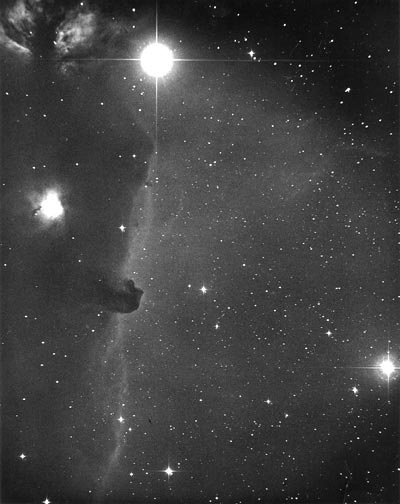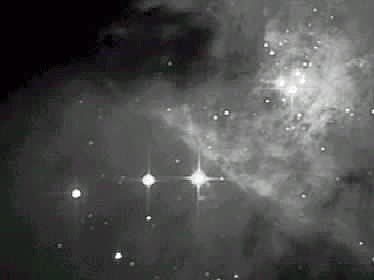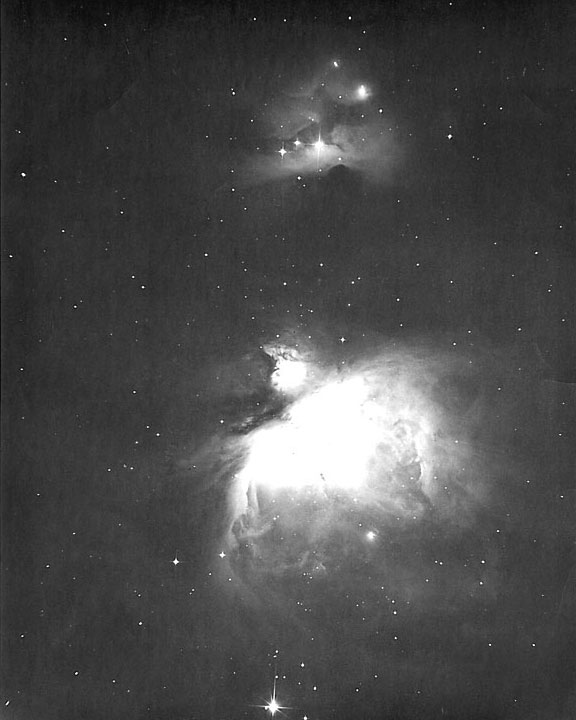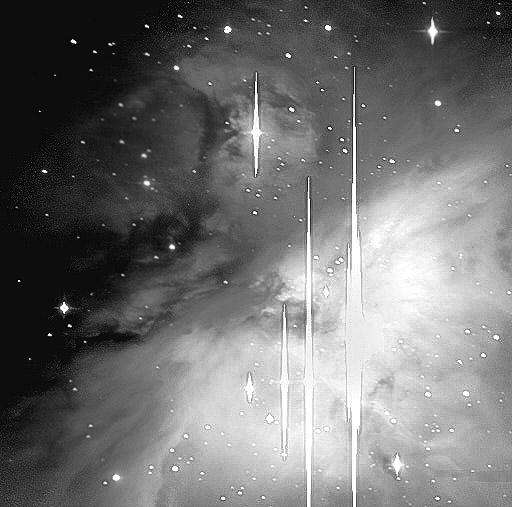First Light! The photo (right) is an historic image (that is extant) taken
through the 30-inch reflector at Stony Ridge Observatory on
September 22, 1963. The image represents "first light,"
when the telescope was first set to photograph an astronomical object.
This 10-minute exposure was taken at 4:50 PDT on Kodak 103aO film by the maker of the 30-inch mirror, Roy Ensign.
In the SRO photo log the first photo made through the 30-inch was taken on September 2, 1963. The image shown here survives as the earliest. The image, of course, is of the Orion Nebula (M-42
and M-43 at bottom half of image). The "Running Man Nebula,"
consisting of the open star cluster (NGC1977), and 2 bright
nebulae (NGC1975 and 1973) is near the top.
Below is another commonly photographed area in Orion, taken by John Sousa and Roy Ensign on Oct 26, 1963. The
bright star is Zeta Orionis or Alnitak, the easternmost
star of the three in Orion's belt. This star is responsible for illuminating
the nearby gas clouds which form NGC 2024 (upper left), the
faint ridge below the star called IC 434, and Barnard 33, aka.
the Horsehead Nebula. North east of the Horsehead is NGC 2023.


The next two images (above and right, both taken by Steve Brewster and John E. Rogers) represent the beginning of the CCD era of photography at SRO. While the images using film show a larger area of sky, the CCD images are many times more sensitive to faint light exhibiting a greater dynamic range, the difference between the brightest and faintest areas imaged. The four bright stars in the upper right are
collectively called the "Trapezium" due to its shape.
The brightest star in the middle of the picture
harbors an unseen companion thought to be a "black hole."
The two small knots just below and to the right of that
star are called "Herbig-Haro"
objects.
|


This image is a recent image of the Orion Nebula using a CCD camera. This 30-second exposure shows the great extent of
brightness in the Orion Nebula and surrounding area. Large
"spikes" emanating from bright stars are image artifacts
called "blooming". The picture was made with an Apogee
AP8p camera using a 1024x1024 SITe CCD chip. The field of view
through the 0.76-m f/6 telescope using this camera is about 19 arc-minutes. By comparing this image with the one above it clearly shows many fainter stars while retaining detail in the brighter areas in a short 30-second exposure compared to 10-minutes. |




